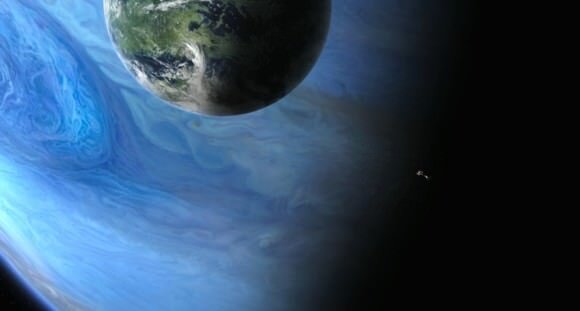Scientists analyzed known exoplanets and came to the conclusion that exomoons suitable for life may revolve around some of them. However, no such moon has been found. There are also still many factors that can affect the Earth-like nature of these celestial bodies.

Which exomoons are suitable for life
There are more than 200 moons of planets in the solar system. On some of them, for example, Enceladus or Europa, there are subglacial oceans that allow the presence of life. Scientists are interested in the question whether conditions suitable for the existence of terrestrial life can exist on the moons of exoplanets, in relation to which the word “exomoons” is increasingly beginning to be used.
So far, various researchers have reported the discovery of only a few objects that can be called exomoons. None of them looks suitable and there are no fully confirmed objects among them either.
But researchers are still interested in the question of which of the already found exoplanets may have moons suitable for terrestrial life. They started by eliminating a number of objects that definitely cannot have such a moon, or the conditions on them are unknown. So the following planets were eliminated:
- exceeding Jupiter by mass by 13 times or more
- orbiting stars with a mass less than 0.08 solar
- for which neither the orbital periods nor the major semi-axis of the orbit are known
- for which neither the mass nor the radius are known
Simulation of Exomoons
After elimination, scientists have 4140 planets left. For each of them, they modeled about 100 thousand possible moons, varying the parameters of the orbit, chemical composition, radius and mass. As a result, 234 cases were found when the exomoon would be at least slightly habitable.

It turned out that most of these planets rotate in the zone of life. This is quite expected, given that most of these planets are habitable. But at distances from the star, the moons of planets with large orbital eccentricities and with significant heating from tidal forces turned out to be more comfortable and habitable.
Unaccounted factors
At the same time, the authors of the publication note that some of the important factors remained unaccounted for. In particular, numerous factors that could limit it were not considered when establishing the moon’s Earth shape. In particular, this concerns the radiation of a star and flares on it.
The researchers believe that this factor can partially offset the host planet. If it is large enough, its magnetic field can deflect all charged particles that threaten its moon. Also, planetary migrations have not yet been taken into account. During them, some exomoons may be lost, and some may not.
The most probable Earth-like exomoon
The planet Kepler-459b has the greatest probability of the existence of an Earth-like moon. This small gas giant orbiting its sun in 854 days. There may be an exomoon around it with a 70 percent chance of life.
Two other gas giants in different systems may have Earth-like moons with a probability of 69 and 64 percent. A suitable moon for life may also be the super-earth Kepler-458 b, which may have a biosphere. In this case, it will be possible to talk about a double Earth-like planet.
After all, even our nearest neighbor may have a habitable moon. However, the probability of the existence of life on the hypothetical moon of Proxima b is estimated at only 14 percent.
According to phys.org
Follow us on Twitter to get the most interesting space news in time
https://twitter.com/ust_magazine

